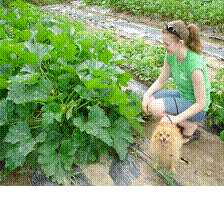



Information & RecipesMost conventional household cleaning products contain ingredients that are hazardous to human health and the environment. This is not a complete list. Check out the references listed below for more information on these and other ingredients.
Ingredients To Avoid2-butoxyethanol (ethylene glycol butyl ether) Associated with liver & kidney damage, reproductive damage Found in carpet cleaners and glass cleaners
Benzene Known human carcinogen Found in all-purpose cleaners, floor and furniture polishes, oven cleaners
Chlorine Bleach (sodium hypochlorite) A potent environmental pollutant frequently involved in poisonings; suspected to be neurotoxic and toxic to the liver Found in bleach, toilet bowl cleaners, disinfectants
Ethoxylated nonyl phenols (NPEs) Endocrine-disrupting chemicals, know as “gender benders” Found in degreasers, cleaning products and detergents
Formaldehyde (Formalin) Know human carcinogen and respiratory irritant; suspected immunotoxin, neurotoxin, respiratory and reproductive toxin Found in air fresheners, deodorizers, disinfectants, antibacterial soaps, furniture polish, carpet cleaners
Silica (in powder form) Carcinogenic as a fine respirable dust Found in abrasive cleaning agents in powder form
Lye (sodium hydroxide) Caustic substance that causes severe corrosive damage to eyes and skin; threatens environment during manufacture and disposal Found in drain cleaners, oven cleaners
Triclosan Suspected carcinogen, immune system and hormone disruptor Found in antibacterial and antimicrobial products
Trisodium nitrilotriacetate (NTA) Possible human carcinogen, impedes wastewater treatment of heavy metals Found in abrasive cleaners
Xylene Associated with liver damage, can depress nervous system; suspected reproductive, developmental and respiratory toxin Found in floor polishes, spot removers, stainless steel cleaners, air fresheners.
How can I tell what’s in it? Unfortunately, manufacturers of these products are not required to list their ingredients in Canada. So how can you make sure that the product you’re using is free of these chemicals? Some options:
Call the 1-800 phone number printed on the product label and ask them what’s in it! This also sends a powerful signal to the manufacturer that consumers care about what’s in their products.
Look for an ingredients list. Companies that use less-toxic ingredients want you to know about it and often provide this information on the label. See section 5 of this guide for some local retailers of safer products.
If you must buy a conventional cleaning product, opt for a fragrance-free product or one without warning labels. Also, remember to wear gloves, follow the instructions and NEVER MIX TWO DIFFERENT CLEANERS TOGETHER!
Easy (and Cheap!) Green Cleaning Recipes Multi-use Cleaner & Disinfectant white vinegar spray bottle a few drops of essential oil (optional) Mix ingredients in spray bottle, Spray area to be cleaned and wipe with a cloth. Works best on alkaline substances. Dissolves scale and soap scum. Inhibits mold, bacteria and viruses.
Multi-use Cleaner & Deodorizer baking soda damp sponge Works best on acidic substances like proteins and grease. Great for scouring metal surfaces and for deodorizing.
Glass Cleaner club soda spray bottle funnel (optional) Pour club soda into a spray bottle. Spray area to be cleaned and wipe with a cloth. Keeps working when no longer fizzy.
Furniture Polish two parts vegetable oil one part lemon juice Mix ingredients together, apply and polish with a soft cloth.
Floor Cleaner three parts hot water one part white vinegar Mix ingredients together and use to mop floor.
Drain Cleaner (non-caustic) 250 mL baking soda 250 mL salt 125 mL white vinegar 1 kettle boiling water Pour baking soda, salt and vinegar down drain and cover if possible. Leave for 15 min. Pour in boiling water. Do not use this method if any conventional drain cleaner is present.
Liquid Laundry Soap 125mL soap flakes 65mL washing soda 65mL Borax 20 drops essential oil (optional) water Boil the soap flakes in water until they melt (2-3 minutes on medium heat). Meanwhile, add washing soda and Borax to a large bucket, then add 7 liters of cold water. Once soap flakes have dissolved, add the hot mixture to the cold, then add 20 drops essential oil (try lemon or citrus scents to deodorize, or tea tree oil to disinfect). Use 1/2 cup per load of laundry.
All Purpose Paste Cleaner 500mL baking soda 125mL castile soap 60mL water 60mL white vinegar 10-20 drops essential oil (optional) This recipe must be made in the following order: mix the baking soda and castile soap into a paste, add water then add vinegar and mix into a paste. Add essential oil if desired.
Mirror & Window Cleaner 45mL white vinegar 5mL castile soap 500mL water spray bottle Pour water and vinegar into a spray bottle, and then add castile soap. Use with newspaper or a cotton rag to clean glass surfaces.
Dishwashing Soap 125mL liquid castile soap 250-500mL water 20 drops essential oil (optional) Mix ingredients and put in a squirt bottle.
Fabric Softener 250mL white vinegar Add to rinse cycle.
Toilet Bowl Cleaner 125mL baking soda OR Borax 125mL washing soda white vinegar Mix washing soda with baking soda OR Borax and apply to surfaces. Scrub and flush. Finish with a splash of vinegar to deodorize.
Stainless Steel Cleaner olive oil white vinegar Rub surface with olive oil on a cloth. Wipe away with vinegar-soaked cloth and let dry.
Countertop/Cutting Board Cleaner 4 tbsp baking soda 2 tbsp lemon juice Mix into a paste and spread on surface. Let sit 30 minutes for ink and other tough stains. Wipe with a damp cloth. Cleans and deodorizes.
Microwave Cleaner 2 tbsp baking soda 1 tbsp lemon juice 1 cup water Mix ingredients together in a microwave safe bowl and microwave for 5 minutes or until the mixture boils. Wipe condensation from the inside of the microwave.
Carpet Deodorizer 2 cups baking soda 4-5 crumbled bay leaves 1/2 cup cornstarch 1 tbsp ground cloves Mix ingredients together and sprinkle on carpets. Let sit up to 24 hours and vacuum. To remove stains, sprinkle baking soda, rub and let sit for 1 hour. Scrub with a stiff brush and vacuum out.
Wood Floor Polish 1/4 cup olive oil 1/4 cup white vinegar 10 drops essential oil (optional) Mix ingredients together. Spray on floors and polish.
About Green Cleaning Ingredients Essential Oils Different essential oils have different properties. ***Note: some essential oils should not be used by or around pregnant women. Anti-bacterial: geranium, lavender, lemon, lime, patchouli & tea tree oils. Anti-fungal: cedarwood, lavender, lemongrass, patchouli, rosemary & tea tree oils. Grease cutting: grapefruit, lemon & lime oils.
Castile Soap (Seafarer’s soap) Soaps made exclusively from vegetable oil (e.g. olive, coconut, almond) as opposed to animal fat or synthetic substances. Considered a green choice due to reduced waste generated during manufacturing and faster biodegradability. Has a very broad range of uses.
Washing Soda (sodium carbonate, soda crystals) Cuts grease, removes lipstick and wax – so don’t use it on fiberglass, aluminum or waxed floors unless you want to remove the wax! It is strongly alkaline so avoid contact with skin, store carefully, and do not mix with acids. Considered very environmentally safe because it breaks down easily.
Borax (sodium borate) Generally considered a green choice because it occurs naturally, is biodegradable, and is phosphate and chlorine free. Has anti-microbial and insecticidal properties and can act like hydrogen peroxide when dissolved in hot water. It is strongly alkaline so avoid contact with broken skin, store out of reach of children and pets, and do not mix with acids.
Soap Flakes You can make your own soap flakes by using any pure vegetable, castile or glycerin soap and grating it with a cheese grater. Pure soap flakes are biodegradable and have low toxicity.
References and Online Resources Baking Soda Cleaning Recipes Arm and Hammer Baking Soda
Bisphenol A Fact Sheet Toxic Nation, Environmental Defence
CancerSmart Consumer Guide (ordering info) Labour Environmental Alliance Society
Green Cleaning Guide For Businesses and Individuals Clean Calgary Association
Green Cleaning Recipes David Suzuki Foundation
Green Clean: The Environmentally Sound Guide to Cleaning Your Home Linda Mason Hunter and Mikki Halpin, 2005 Melcher Media, New York
Guide To Less Toxic Products Environmental Health Association of Nova Scotia
Guide To Spring Cleaning Toxic Nation, Environmental Defence
Make Your Home A Healthy Home Toxic Nation, Environmental Defence
Non-Toxic Cleaning Recipes Women’s Voices For The Earth
|
|
Green Cleaning |
|
The PGSS Environment Committee |

